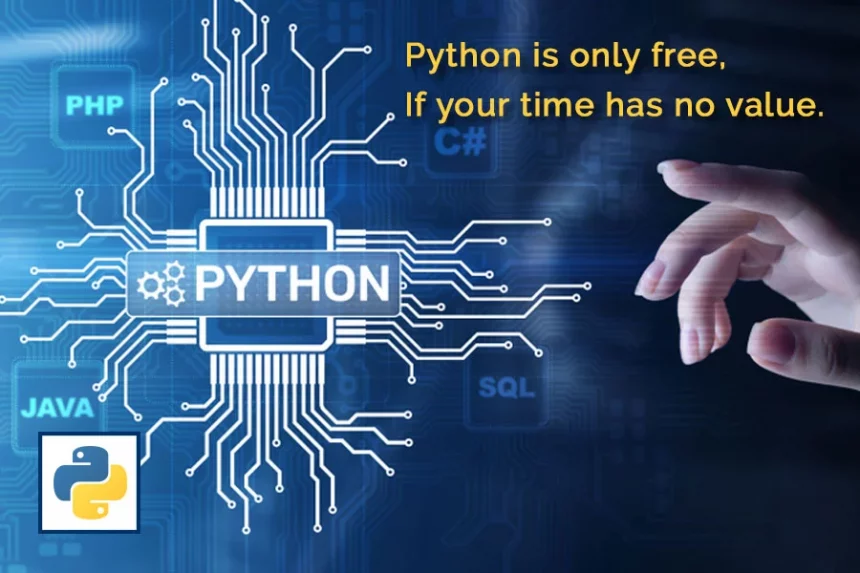Learning Python can be an intimidating experience, especially for those who are just getting started. But with the right tools and guidance, anyone can become an expert in the language. This beginner’s guide to mastering Python provides helpful tips and tricks that are designed to help you excel in your course. Whether you’re brand new to Python or want to brush up on your skills, this guide has the information you need to get ahead. We’ll cover topics such as the basics of the language, data structures, and object-oriented programming, as well as tips on debugging and writing clean code. With our guidance, you’ll soon be writing Python like a pro. So, let’s get started and learn how to master Python!
Basics of the Python Language
First and foremost, let’s take a look at the basics of Python language. There are three things that set Python apart from other programming languages: syntax, readability, and usage.
- First, the syntax of Python is extremely clear and readable. If you’ve ever worked with a language that is more cryptic or less “human-readable,” you’ll know how helpful this can be. Python uses whitespace to indicate where blocks of code begin and end, making it easy to spot where one part of your code ends and another begins. You’ll also find that the syntax for writing code in Python is relatively straightforward. Because Python is designed for Non-Programmers, it has a very intuitive syntax. And, thanks to its readable syntax, Python code is also very easy to debug.
- Second, Python is a general-purpose language. This means that it can be applied to a variety of different scenarios and use cases. In fact, it can be used to solve pretty much any programming problem. This is in stark contrast to more specialized languages, which are typically designed for only one particular application.
- Third, Python was designed with ease of use in mind. This is evident in the fact that Python can be used to solve a huge array of problems, but is also very easy to learn and use. It’s a great language to start with if you’re new to programming, but it’s also a powerful language that experienced developers can use to solve complex problems.
Working with Data Structures
As a language that was designed to solve a variety of problems, Python has a wide variety of data structures built in. This includes a range of basic data structures, such as lists and sets, as well as more complex ones, such as dictionaries.
- Lists: Lists are one of the most fundamental data structures in Python. They are similar to arrays in other languages, such as C++ and Java. Lists are used to store a list of values in a single variable and can be accessed via an index. Lists can be used to store a variety of different data types, including strings and numbers. When working with lists, you can use the indices to access the values. For example, if a list has three values, you can access the second one by using index 2.
- Sets: Sets are a data structure designed to store a set of distinct values, such as words in a document. You can use sets to avoid duplicates in a list or to find the union or intersection of multiple lists. Unlike lists, a set can only store one instance of each value; if you try to add a value that has already been added to the set, it will be ignored.
- Dictionaries: Another data structure that you’ll find useful when working with Python is the dictionary. As the name suggests, a dictionary is used to store a collection of key-value pairs. A dictionary is often used to store data that can change, as the values are not ordered and can be added, removed, and edited at any time. Data structures are essential in programming, as they enable you to store and organize data in a way that makes it easy to access and manipulate. They’re helpful for organizing complex data, such as game data, or any situation where you need to store a lot of information in a single place.
Object-Oriented Programming in Python
In addition to the various data structures available in Python, it also has Object-Oriented Programming (OOP) features. OOP features enable you to write clean, organized code that is easy to read and maintain. They help you group similar items together into a single unit, which is referred to as a class. And, once you’ve created a class, it’s easy to produce new instances of that class. This is known as “instantiation,” and you can either create new instances manually, or you can let the system do it for you automatically. Let’s take a look at how OOP works in Python.
Debugging and Writing Clean Code
Now that we’ve covered the basics of Python, let’s take a look at debugging and writing clean code. Python has a wide variety of debugging tools that you can use to troubleshoot and fix errors in your code. For starters, you can use the “print” statement to output text, as well as see if your code is executing in the way you expect it to. You can also use the “traceback” function to output a list of errors that occurred while executing your code. Using the “break” statement, you can execute code when certain conditions are met. This can be helpful for debugging or monitoring your code to see if certain processes are happening. You can also use conditional breakpoints to execute code only when a certain condition is met.
Python Libraries and Frameworks
As you’ve probably noticed, Python is a robust and feature-rich language. But, that’s not all it can do. Python also has an expansive library of functions that you can use. Python libraries are collections of pre-written code that you can import and use in your own projects. There are more than 100,000 different Python libraries, covering a wide variety of topics. Libraries are helpful for quickly getting a project up and running, as well as for saving time and effort. They can also be used to tackle a wide variety of problems.
Another helpful tool when programming in Python is a framework. A framework is a system or architecture that can be used as the basis for building applications. Some of the most popular Python frameworks include Django and Flask. Frameworks are helpful in that they provide built-in tools and features, as well as a pre-determined structure for building your code. This can make programming faster and easier, and it makes it easier to write clean code.
Tips for Staying Organized and On Track
As you’re learning how to master Python, it’s important to stay organized and on track. This can help make your learning process easier, and it can help prevent you from getting overwhelmed by information overload. Below are some tips for staying organized while learning Python:
- Create a Learning Plan: No one expects you to know everything about Python right away. In fact, it’s unrealistic to think that you’ll be an expert in a week or two. Instead, create a learning plan that outlines the topics you need to cover. This will help you stay organized, and it will also make it easier to stay focused and on track.
- Break Up Your Learning: As you make your way through the learning process, you may find that it’s overwhelming and difficult to stay organized. If this happens, try breaking up your learning over a longer period of time. This can help you better manage your time, and it can make it easier to stay focused on your goal.
- Stay Organized: Being organized is essential to staying on top of your learning. To stay organized, use a folder structure to organize your files and keep related information in one place. It’s also helpful to create your own note-taking systems, such as using a blog or a notepad. This can help you stay on track and keep your thoughts organized.
Best Practices for Python Programming
Now that we’ve covered a few of the basics of Python and how to use it, let’s cover some best practices that you can use when programming in Python.
- Write Code That is Easy to Read and Understand: When you’re writing code, it’s important to write it in a way that is easy to read and understand. This includes following standard conventions, such as proper indentation, and writing code that is straightforward and simple.








